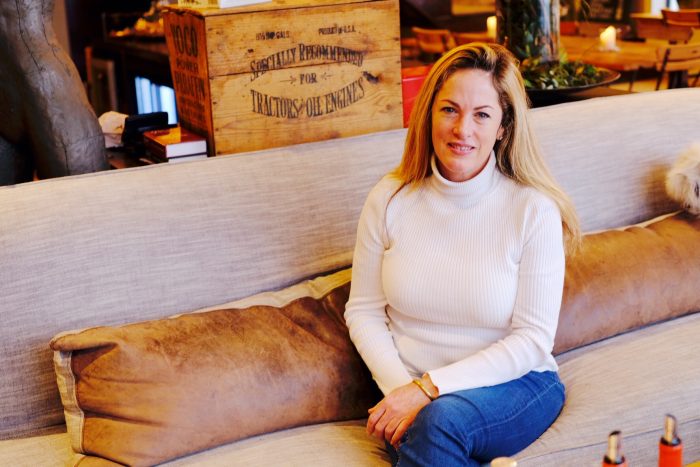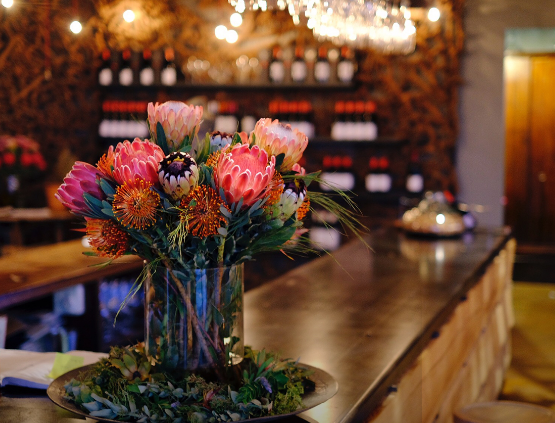It was a classic Cape winter’s day ( not in a good way), i.e. the kind where you should be indoors near a powerful heat source – not motoring along the N1 to the Stellenbosch winelands in torrential rain. Yet I was determined to meet with owner Rose Jordaan to go deeper into the Bartinney story – one that I only knew parts of – to distill the essence of what has made this little pocket of the Banhoek Valley so irresistible to me over the past few years.
A SACRED SPACE

When visitors to the Cape ask me to recommend wineries to visit, Bartinney’s Tasting Shed is a permanent fixture on my list. Beyond the wines, which we’ll get to later, it’s a space that resonates with me on a number of levels. Foremost, both the farm and tasting room are exquisite, yet relaxed and unpretentious. As someone easily put off by extravagance, it’s the kind of place where I know I can unwind in a beautiful setting, whether popping in to enjoy a glass of Chardonnay while taking in the breathtaking Banhoek views from the wide balcony, or for something completely different, like a wine and fynbos pairing. It also doesn’t hurt that it’s a stone’s throw from the town of Stellenbosch – in less than 15 minutes you can travel from bustling student town to the heights of the Helshoogte pass, which boasts some of the most impressive vistas the Cape Winelands has to offer.
THE FAMILY FARM

Even on a gloomy Saturday in Winter, the cosy Bartinney Tasting Shed is a welcome sight. As is its proprietor, Rose Jordaan, who mirrors the surroundings both in elegance and warmth. After drying off and settling back into a pair of comfy couches, Rose began to recount to me the part of the Bartinney story that is the most well-known: of how her and husband Michael bought back the family farm in 2006, which Michael’s father had sold 9 years prior. In 2008, Rose moved to the farm with her daughters, and that’s where the serious work began.
“When we took it over, it was really in a bad state,” she said, matter-of-factly. “In fact, there were three protea plants on the entire farm. That was it. And 17 hectares of the [28 hectare] farm were alien vegetation. So we started there. First, you’ve got to come to terms with where you are; what are you starting with – because you’re not starting with a clean slate. A clean slate is natural, pure, pristine beauty. But we’ve already messed that up. So now we’ve got to go back to nature. Nature is perfect, the way it is.”

I have never seen Bartinney’s tasting room not overflowing with proteas, so can only imagine Rose’s distress to find the old family farm in such disarray. “Looking at what we had, was a very aggressive viticultural practice and spray gun program. Nothing made sense to me. I couldn’t understand. There were no birds on the farm. There was no sound, because there was no cycle… no circle of life.”
more on port2port.wine




